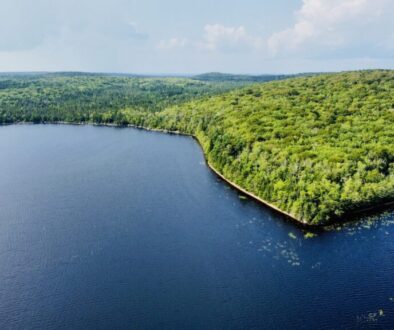CPAWS welcomes four new protected wilderness areas in Cape Breton
Published on Dec 15 2014
HALIFAX – The Canadian Parks and Wilderness Society (CPAWS) welcomes today’s announcement by the Nova Scotia government that it has created four new protected wilderness areas in Cape Breton.
“Cape Breton is home to some absolutely stunning natural landscapes,” says Chris Miller, National Conservation Biologist for CPAWS. “It’s fantastic that more of this natural diversity will be conserved for future generations with the creation of these new protected wilderness areas.”
Today’s designations are the first new protected wilderness areas established in Cape Breton since 1999.
The four new protected wilderness areas are:
• Humes River Wilderness Area (3,625 hectares): One of the largest remaining intact river valleys within the Bras d’Or Lake watershed. Contains extensive old-growth tolerant hardwood forest, with steep ravines with old red spruce and hemlock forest. Supports important habitat for the endangered American marten and effectively expands protection for the nearby Trout Brook Wilderness Area.
• The Stillwaters Wilderness Area (2,969 hectares): Contains extensive large intact forests and peatland ecosystems. Occurs at the boundary of three natural landscapes providing excellent ecosystem representation. Provides buffer zone for northern boundary of Louisbourg National Historic Site.
• Baddeck River Wilderness Area (2,778 hectares): Contains over 35 km of river frontage within the Cape Breton Highlands, including examples of rich floodplain sites. Contains old growth hardwood forests and important habitat for the endangered American marten. Provides landscape connectivity with nearby North River Wilderness Area.
• Ruiss Noir Wilderness Area (1,602 hectares): Supports extensive old growth hardwood forests and includes transition zone between slope and plateau forest habitats. Contains rugged and steep ravines and occurs within the breeding range of the endangered Canada lynx. This site is the best landscape representation option within the Squirrel Mountain Foothills natural landscape.
Also included in today’s announcement is the creation of 16 new nature reserves, at sites scattered around the province. In total, about 14,000 hectares of land is being added to Nova Scotia’s system of parks and protected areas. With these new designations, there are now 44 protected wilderness areas in the province.
“It’s nice to see the Nova Scotia government moving ahead with the implementation of the final protected areas plan released last year,” says Miller. “Today’s announcement is the first batch of new protected areas emanating from this plan, with additional batches expected over the coming months.”
In August 2013, the Nova Scotia government released a plan to substantially increase the amount of protected areas in the province. This plan was finalized after several rounds of public and stakeholder consultations, and after several years of detailed planning and scientific assessment. It has received both national and international attention for the important steps it is taking to conserve biodiversity.
Nova Scotia government press release here.
View the final protected areas plan here.


